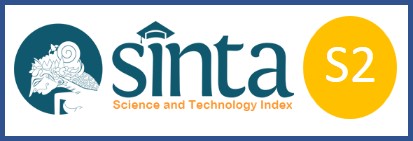Tourism Influence on The Economy: Analysis of The Study of The Origin of Foreign Tourist Visits
Downloads
The influence of foreign tourist arrivals based on the region of origin on economic growth was analyzed in this study, using GDP data as a proxy for economic growth, the number of tourist visits, the Consumer Price Index, and the monthly period of exchange for 2007-2016. This study uses secondary data with the Error Correction Model (ECM) regression method with short and long-term calculations. The results showed that the variable number of tourist visits had an effect on GDP in the continents of Asia, Europe, Middle-East, and Oceania while in the long run in all continents except America. The exchange rate variable in the short term has a negative effect on GDP in the American Continent and the Middle East, while in the long run, the exchange rate variable has a positive effect on GDP in the Asean continent and Europe. The CPI variable only has a positive effect on GDP in the long run for all continents except America. So that it can be concluded that not all continents have a positive impact on GDP, one of which is the American continent, so in order to optimize and increase economic growth, it should be stressed that the cost of developing the tourism sector in America should be allocated more proportionally or diverted to continents of Asia, ASEAN, Oceania, Europe and the Middle East.of developing the tourism sector in America should be allocated more proportionally or diverted to continents of Asia, ASEAN, Oceania, Europe and the Middle East.
Keywords: Error Correction Model,GDP, Tourism
JEL: R10; Z3
Agiomirgianakis, G., Bertsatos, G., & Tsounis, N. (2018). Asymmetric responses in the tourism demand function. Journal of Economic Asymmetries, 18. https://doi.org/10.1016/j.jeca.2018.e00103
Antonakakis, N., Dragouni, M., & Filis, G. (2015). How strong is the linkage between tourism and economic growth in Europe? Economic Modelling, 44. https://doi.org/10.1016/j.econmod.2014.10.018
Ayuni, Sofaria, Anam, C., Setiyawati, N., Riyadi, Hastuti, A., Larasaty, P., & Pratiwi, A. I. (2017). Laporan Perekonomian Indonesia 2017.
Baharumshah, A. Z., Slesman, L., & Wohar, M. E. (2016). Inflation, inflation uncertainty, and economic growth in emerging and developing countries: Panel data evidence. Economic Systems, 40(4). https://doi.org/10.1016/j.ecosys.2016.02.009
Bato, A. R., Taufiq, M., & Putri, E. R. (2017). Analisis Pengaruh Variabel Makro Ekonomi Terhadap Nilai Tukar Rupiah Tahun 2006-2015. Laa Maisyir: Jurnal Ekonomi Islam, 4(2).
Blanke, J., & Chiesa, T. (2011). The Travel & Tourism Competitiveness Report 2011 Beyond the Downturn. https://rmportal.net/library/content/the-travel-tourism-competitiveness-report-2011-beyond-the-downturn/view
Boediono. (1980). Seri Sinopsis Pengantar Ilmu Ekonomi No. 2 Ekonomi Makro, Bpfe. vol. 2
Chen, C. F., & Chiou-Wei, S. Z. (2009). Tourism expansion, tourism uncertainty and economic growth: New evidence from Taiwan and Korea. Tourism Management, 30(6). https://doi.org/10.1016/j.tourman.2008.12.013
Damayanti, N. L. E., & Kartika, I. N. (2016). Pengaruh Kunjungan Wisatawan Asing dan Investasi terhadap Penyerapan Tenaga Kerja serta Pertumbuhan Ekonomi. E-Jurnal EP Unud, 5(7).
Engle, R. F., Granger, C. W. J., & Grangeri, C. W. J. (1987). Co-Integration and Error Correction: Representation, Estimation, and Testing. Source: Econometrica Econometrica, 55(2).
Granger, C. W. J., & Newboldm, P. (1974). Supurious Regressions in Econometrics. Journal of Econometrics 2, 111–120. http://www.climateaudit.info/pdf/others/granger.1974.pdf
Habib, M. M., Mileva, E., & Stracca, L. (2017). The real exchange rate and economic growth: Revisiting the case using external instruments. Journal of International Money and Finance, 73. https://doi.org/10.1016/j.jimonfin.2017.02.014
Karlina, B. (2017). Pengaruh Tingkat Inflasi, Indeks Harga Konsumen Terhadap PDB di Indonesia Pada Tahun 2011-2015. Jurnal Ekonomika Dan Manajemen, 6(1).
Katircioglu, S. T. (2009). Revisiting the tourism-led-growth hypothesis for Turkey using the bounds test and Johansen approach for cointegration. Tourism Management, 30(1). https://doi.org/10.1016/j.tourman.2008.04.004
Lubis, I. F. (2020). Analisis Hubungan Antara Inflasi dan Pertumbuhan Ekonomi: Kasus Indonesia. Quantitative Economics Journal, 3(1). https://doi.org/10.24114/qej.v3i1.17443
Mankiw, N. G. (2010). Macroeconomics (7th Ed). In Worth Publishers.
Ma'ruf, A., & Wihastuti, L. (2008). Pertumbuhan ekonomi indonesia: determinan dan prospeknya. Jurnal Ekonomi & Studi Pembangunan, 9(1), 44–55.
Mahmoud, L. O. M. (2015). Consumer price index and economic growth: A case study of Mauritania 1990 - 2013. Asian Journal of Empirical Research, 5(2).
Mohseni, M., & Jouzaryan, F. (2016). Examining the Effects of Inflation and Unemployment on Economic Growth in Iran (1996-2012). Procedia Economics and Finance, 36. https://doi.org/10.1016/s2212-5671(16)30050-8
Nesparnas Kemenpar. (2017). Neraca Satelit Pariwisata Nasional (Nesparnas). In Annual Fisheries Statistics 2017 – Import / Eksport Volume 2.
Raza, S. H., Javed, M. R., & Naqvi, S. M. A. (2013). Economic growth and inflation: A time series analysis of Pakistan. International Journal of Innovative Research and Development, 2(6), 689–703.
Razzaque, M. A., Bidisha, S. H., & Khondker, B. H. (2017). Exchange Rate and Economic Growth: An Empirical Assessment for Bangladesh. Journal of South Asian Development, 12(1). https://doi.org/10.1177/0973174117702712
Seghir, G. M., Mostéfa, B., Abbes, S. M., & Zakarya, G. Y. (2015). Tourism Spending-Economic Growth Causality in 49 Countries: A Dynamic Panel Data Approach. Procedia Economics and Finance, 23. https://doi.org/10.1016/s2212-5671(15)00402-5
Shahzad, S. J. H., Shahbaz, M., Ferrer, R., & Kumar, R. R. (2017). Tourism-led growth hypothesis in the top ten tourist destinations: New evidence using the quantile-on-quantile approach. Tourism Management, 60. https://doi.org/10.1016/j.tourman.2016.12.006
Sukirno, S. (2015). Makroekonomi Teori Pengantar Edisi Kedua. Jakarta: PT Raja Grafindo Persada
Suparta, I. W. (2009). Spillover Effect Perekonomian Provinsi DKI Jakarta dan Sumatera Selatan Terhadap Pertumbuhan Ekonomi Provinsi Lampung. Jurnal Ekonomi Pembangunan: Kajian Masalah Ekonomi Dan Pembangunan, 10(1). https://doi.org/10.23917/jep.v10i1.807
Suselo, S. L., Sihaloho, H. D., & Tarsidin, T. (2008). Pengaruh Volatilitas Nilai Tukar Terhadap Pertumbuhan Ekonomi Indonesia. Buletin Ekonomi Moneter Dan Perbankan, 10(3). https://doi.org/10.21098/bemp.v10i3.225
Copyright (c) 2019 Kdwi wahyu Ksamawan, Ghozali Maskie, David Kaluge

This work is licensed under a Creative Commons Attribution-ShareAlike 4.0 International License.
JIET (Jurnal Ilmu Ekonomi Terapan) (p-ISSN: 2541-1470; e-ISSN: 2528-1879) is licensed under a Creative Commons Attribution-ShareAlike 4.0 International License
Authors who publish with JIET (Jurnal Ilmu Ekonomi Terapan) agree to the following terms:
- The journal allows the author to hold the copyright of the article without restrictions.
- The journal allows the author(s) to retain publishing rights without restrictions
- The legal formal aspect of journal publication accessibility refers to Creative Commons Attribution ShareAlike 4.0 International License (CC BY-SA).












